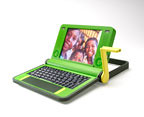USA Today reports that the space tourism race is on– and one of the first tourists is ready for his journey:
Adnan al-Maimani insists he isn’t looking to be a pioneer — he just dreams of looking down on Earth. So the 40-year-old entrepreneur is paying more than $100,000 to go on the first flight traveling to the edge of space from a Mideast nation.
The flight, which will travel about 62 miles toward space and give its passengers up to five minutes of weightlessness, is part of an American company’s plan to establish a spaceport in the northern tip of the United Arab Emirates.
Virginia-based Space Adventures — the only company to have successfully sent private citizens into space — won’t say when the flight will take place, only that it will be within a few years….
The journey has to wait until Space Adventures carries out plans it announced in February to build a commercial spaceport in Ras Al-Khaimah, the most northern of seven emirates making up the United Arab Emirates….
Space Adventures, whose advisers include Apollo 11 moonwalker Buzz Aldrin and several shuttle astronauts, says 200 people have already made reservations for future suborbital spaceflights, although the program is still in a developing stage.
Space Adventures has a partnership with the Russian Federal Space Agency and previously sent American businessman Dennis Tito, scientist Gregory Olsen and South African Mark Shuttleworth on Russian rockets to the international space station. Each paid $20 million.
As we’ve reported before, Space Adventures is locked in a race with Virgin Galactic to bring the next wave of of tourists, if not quite to the stars, then above the stratosphere. But as any tourist anywhere knows, getting there is easy. It’s finding decent lodging that’s the hard part.
Virgin Galactic’s Richard Branson is thinking that through, according to Hotels Magazine (link to story not available):
SIR Richard Branson is taking a giant leap for mankind by drawing up plans to build the worlds first space hotels, his space flight company Virgin Galactic has told The Business.
Alex Tai, its operations director, who will pilot Virgins first commercial space flight in 2008, has held talks with US hotel entrepreneur Robert Bigelow about the project, Virgin Galactics president Will Whitehorn confirmed.Bigelow Aerospace is developing inflatable pods it believes could receive the first space travellers by the end of the decade. Branson, Virgin Galactics chairman, revealed the space hotel discussions in Dubai last week.
Branson said: We are talking to people who are developing hotels for space. We are also talking to people who are developing launch craft to get hotels into space. People know that we can turn something that might seem a bit bizarre into a commercial reality. Personally, I think theres a demand for space hotels.
 It’s been just over a year since Nicholas Negroponte announced at the World Economic Forum in Davos, Switzerland the goal of developing a
It’s been just over a year since Nicholas Negroponte announced at the World Economic Forum in Davos, Switzerland the goal of developing a